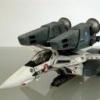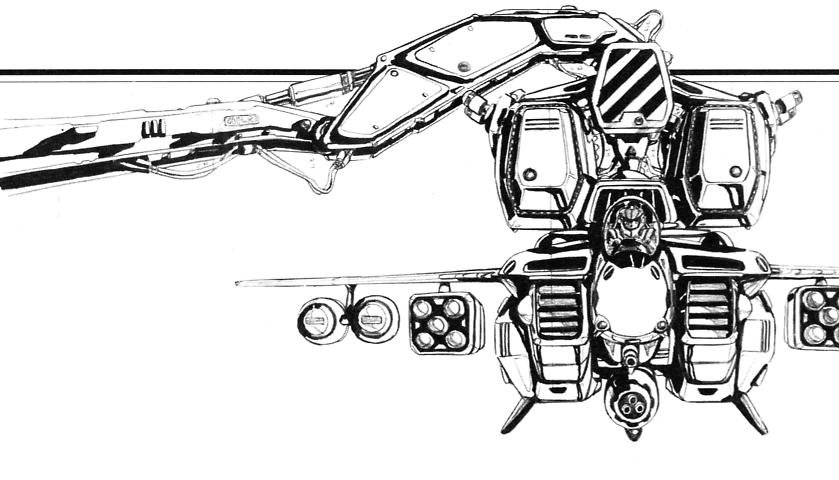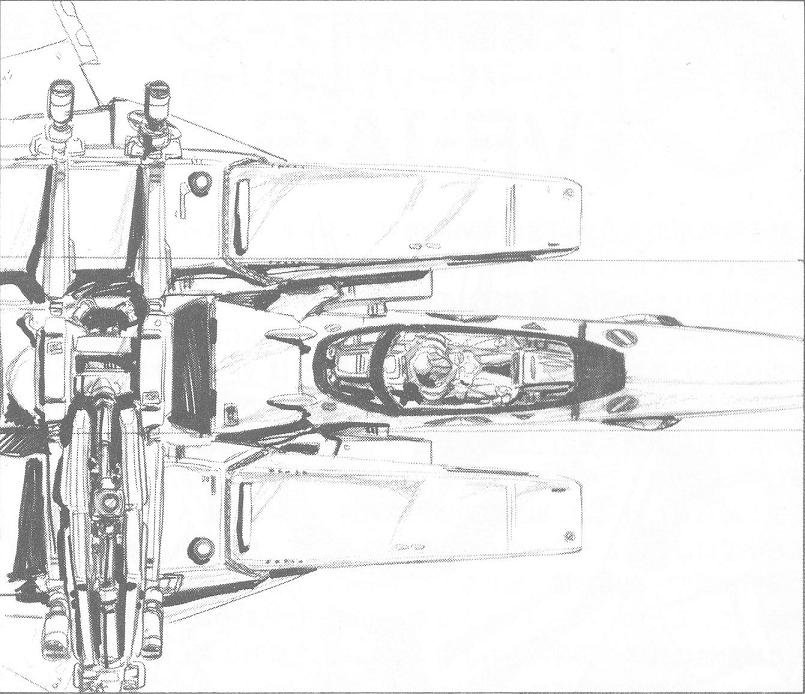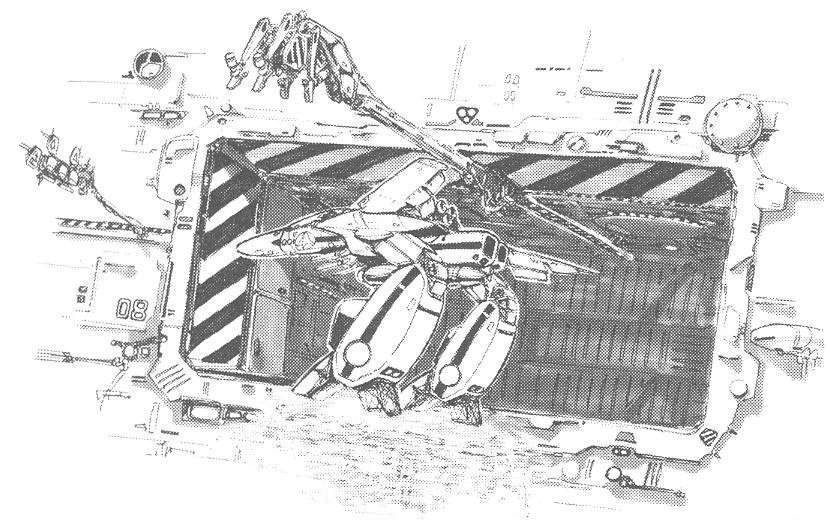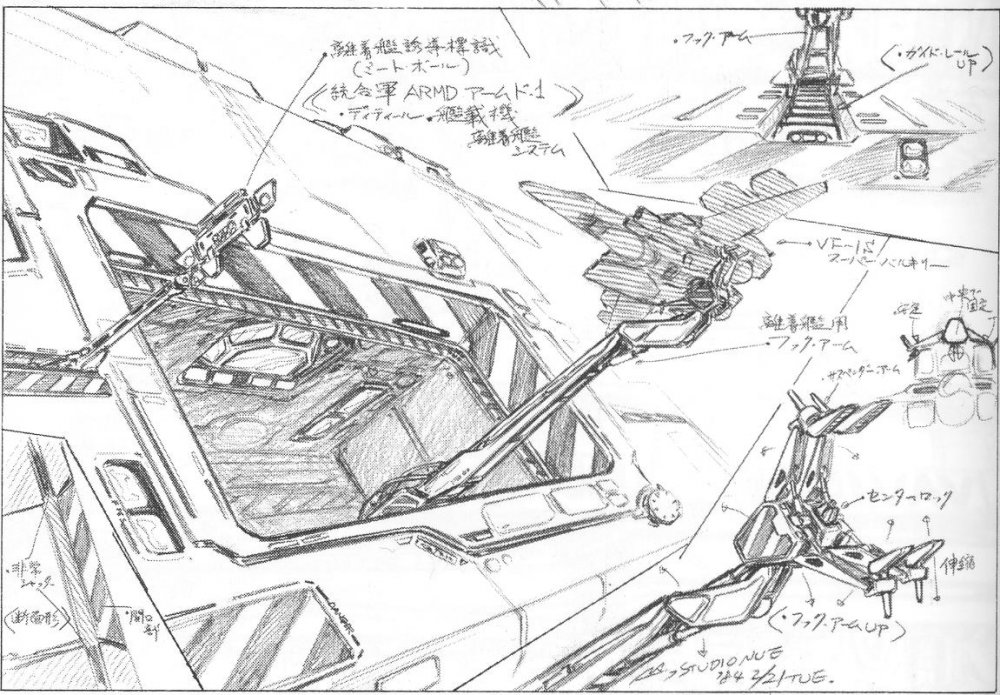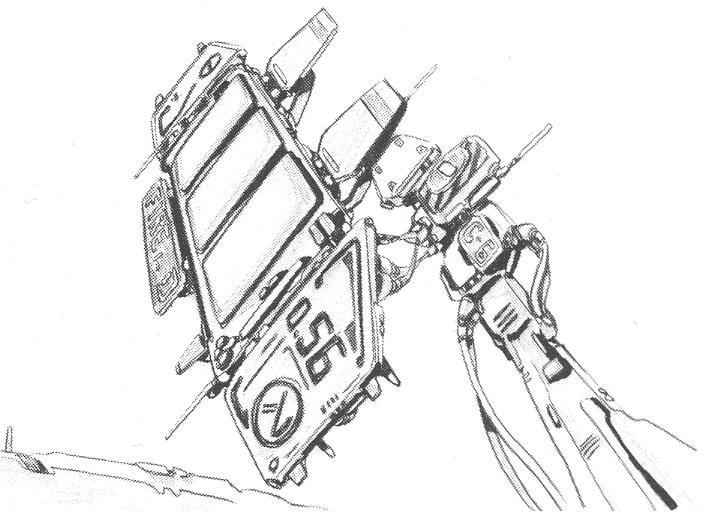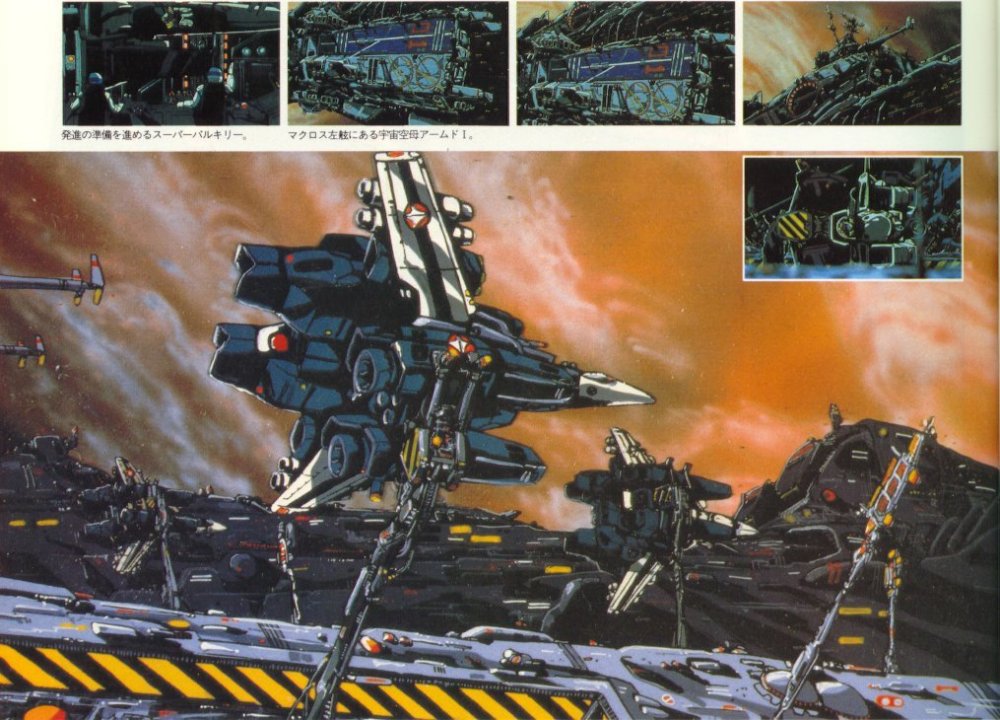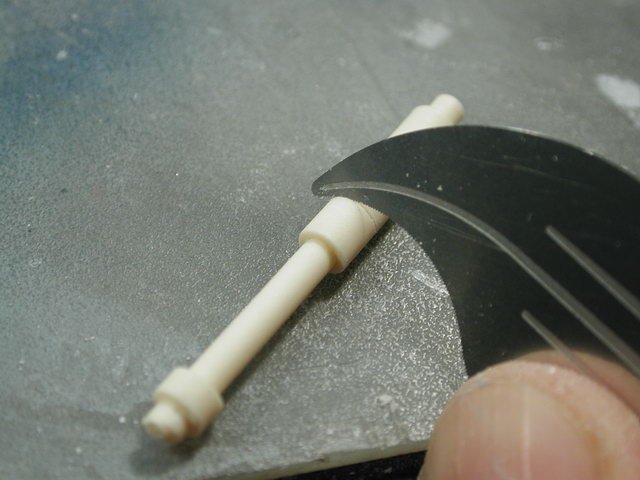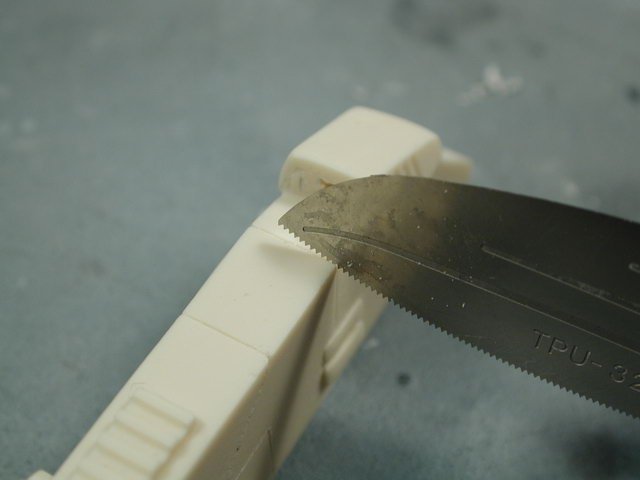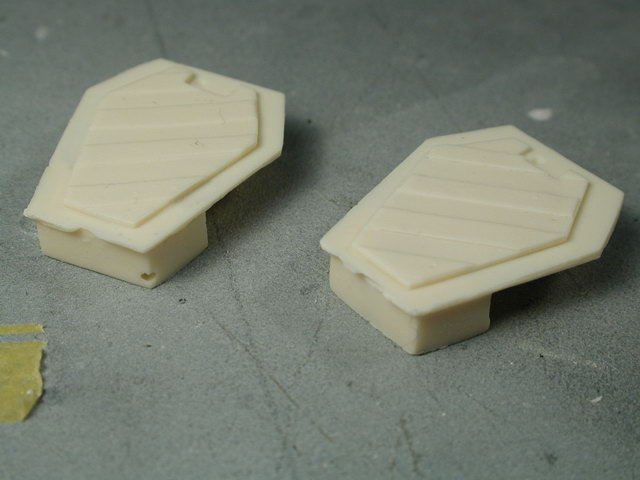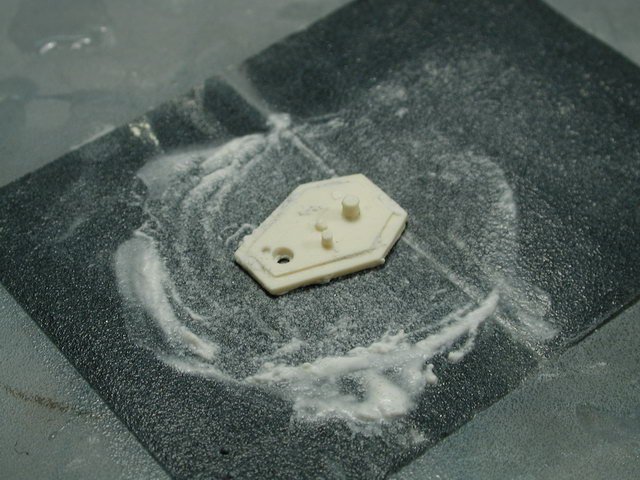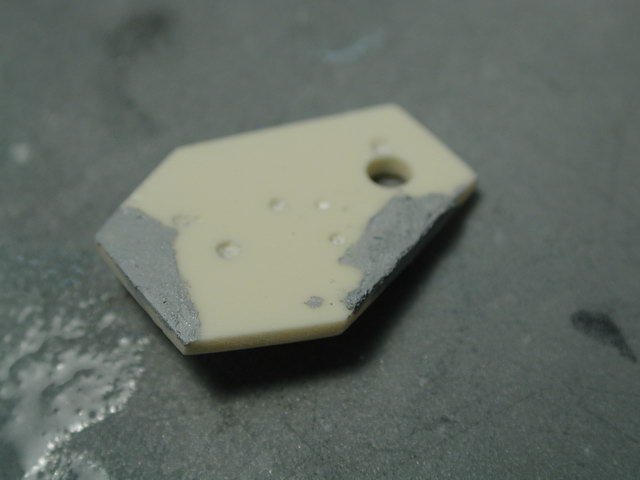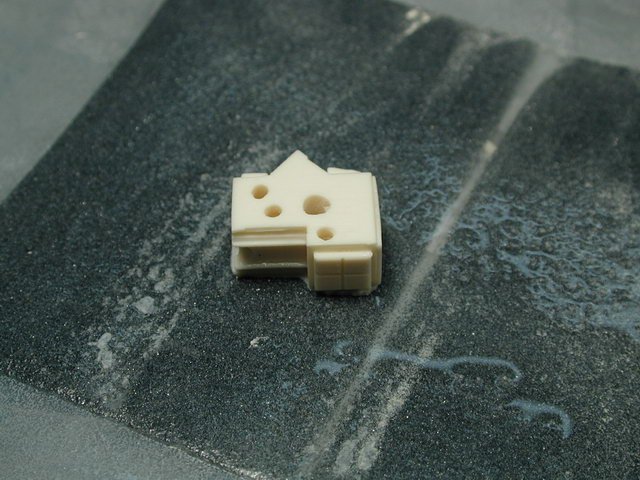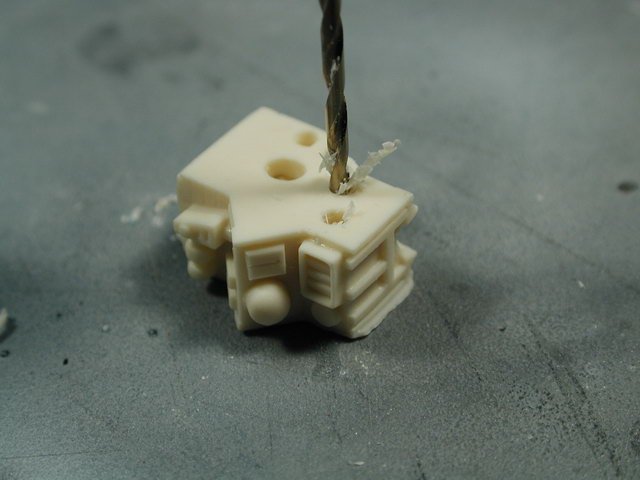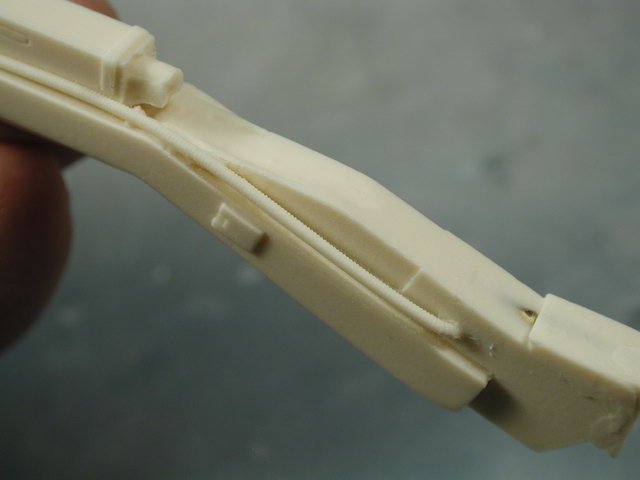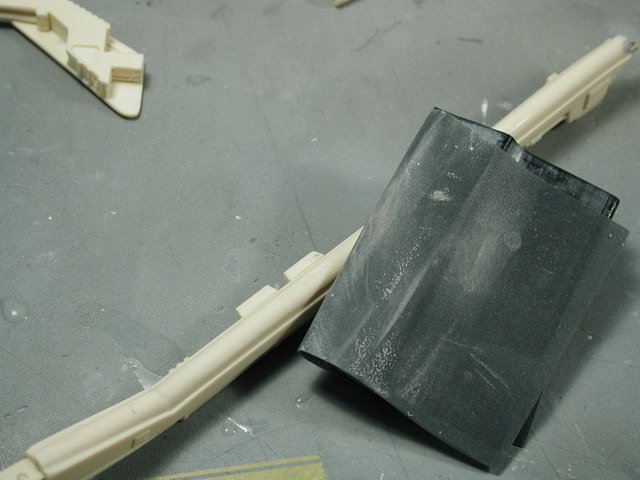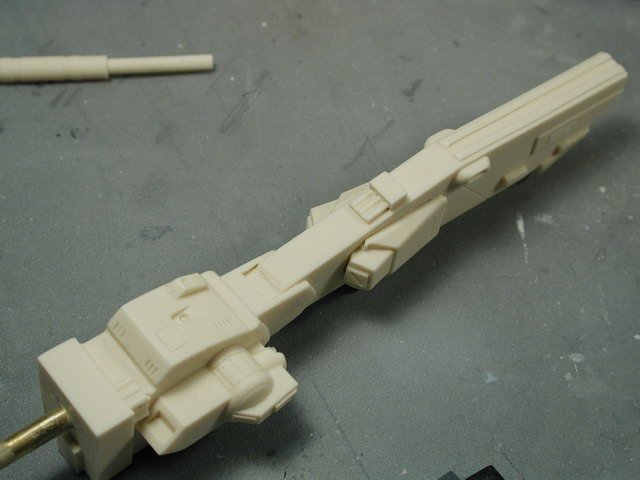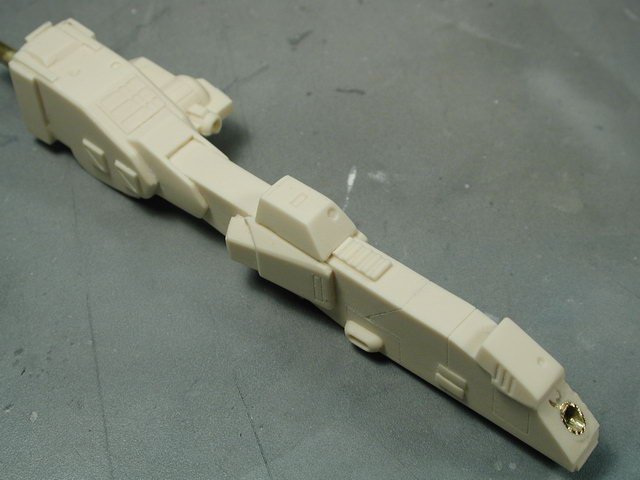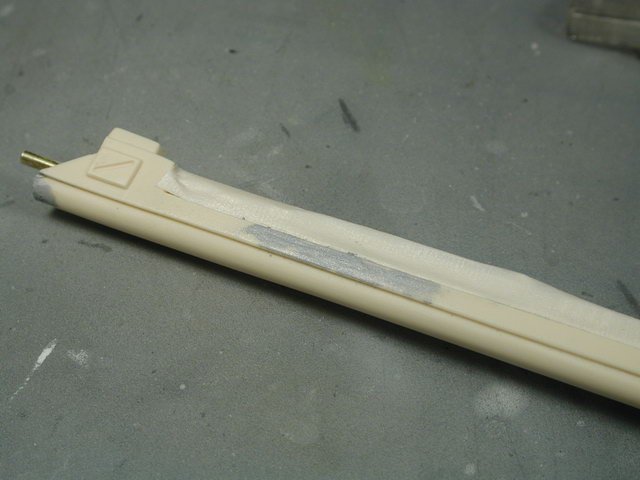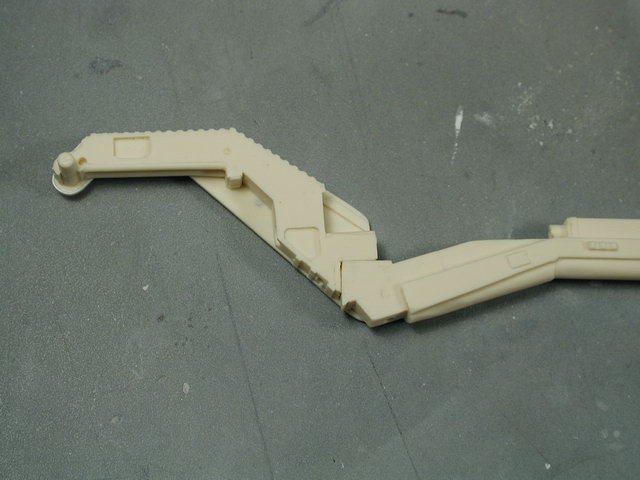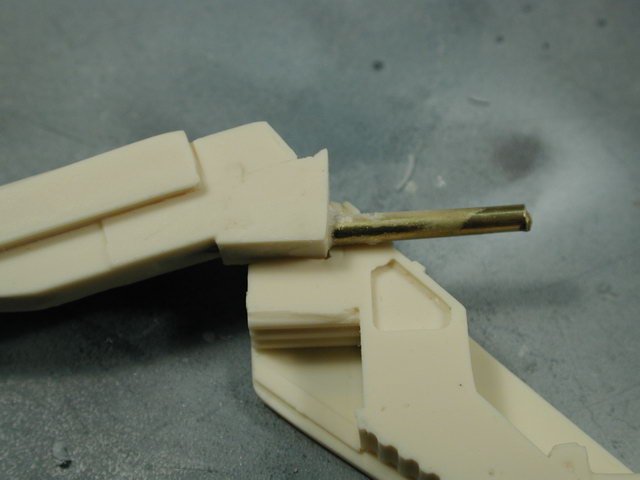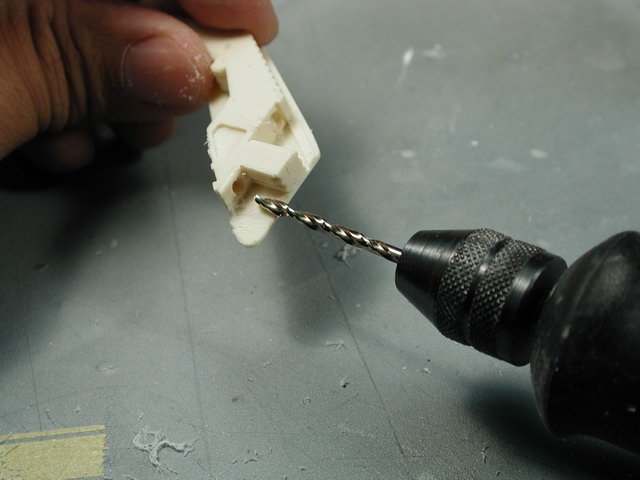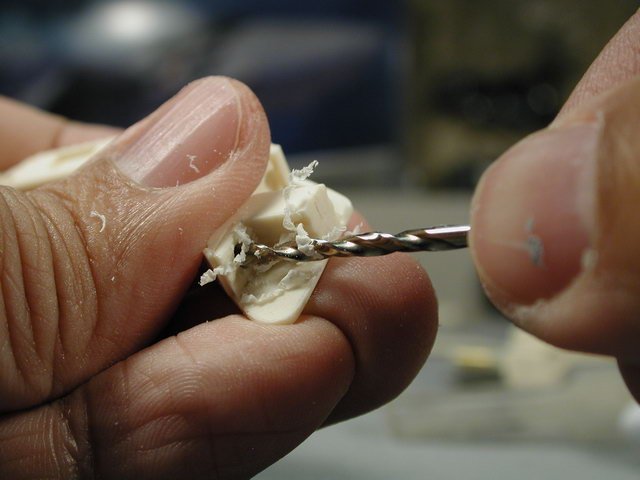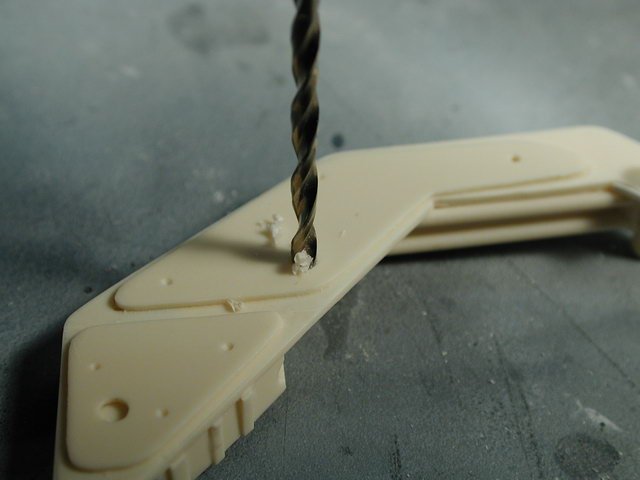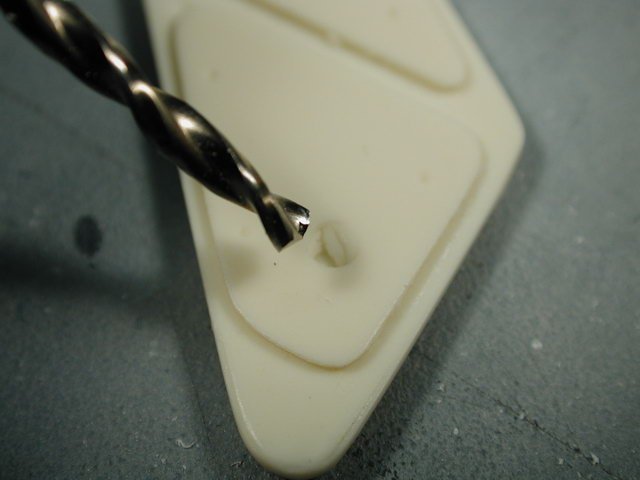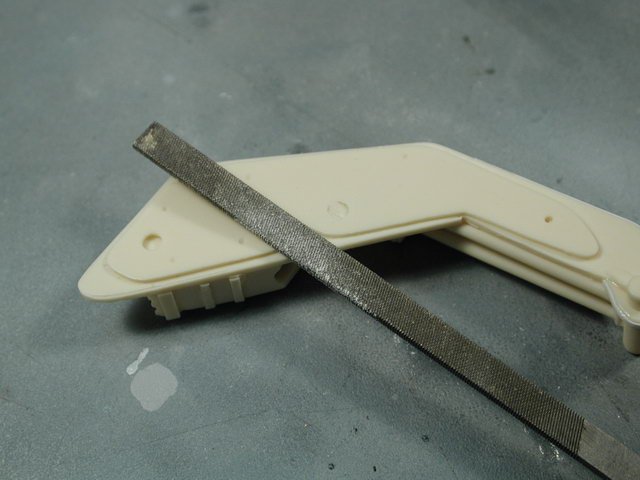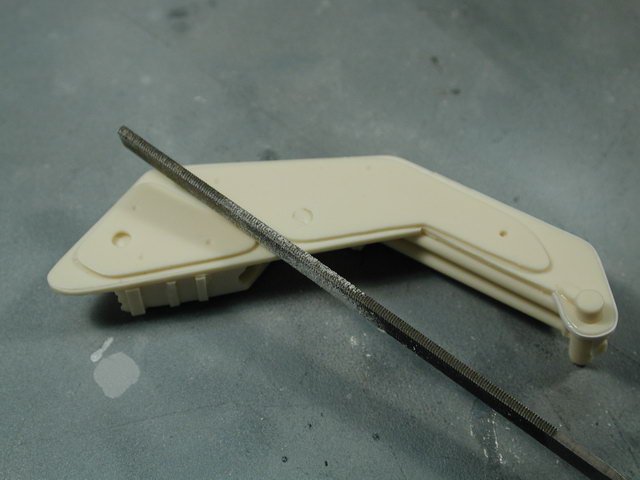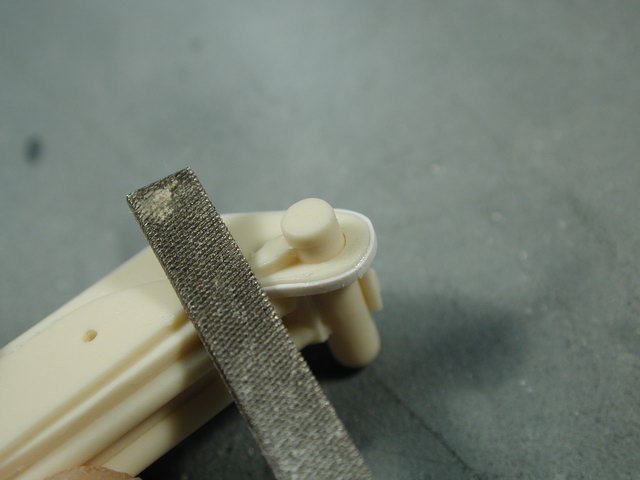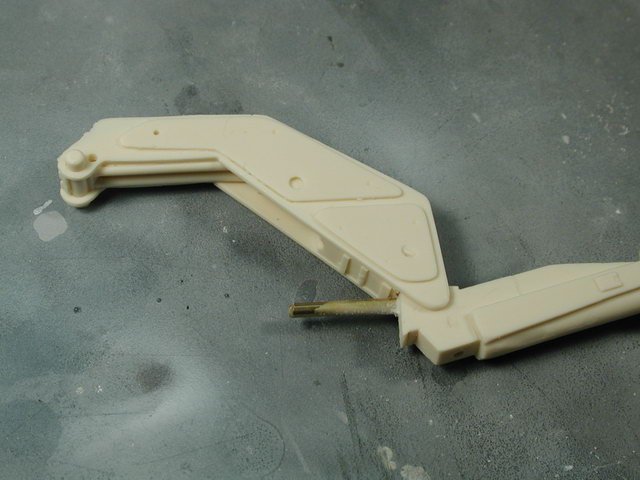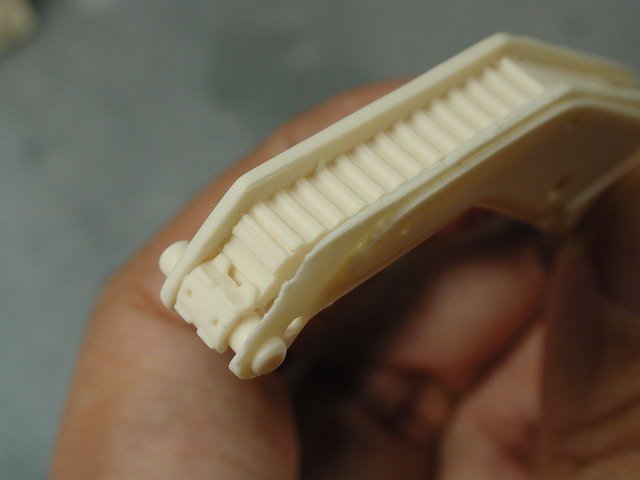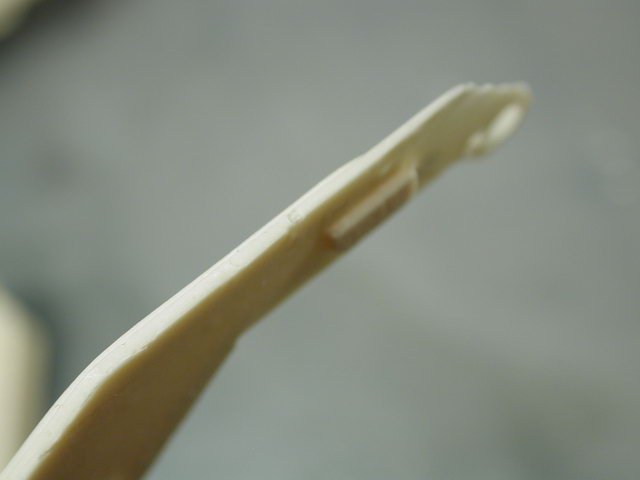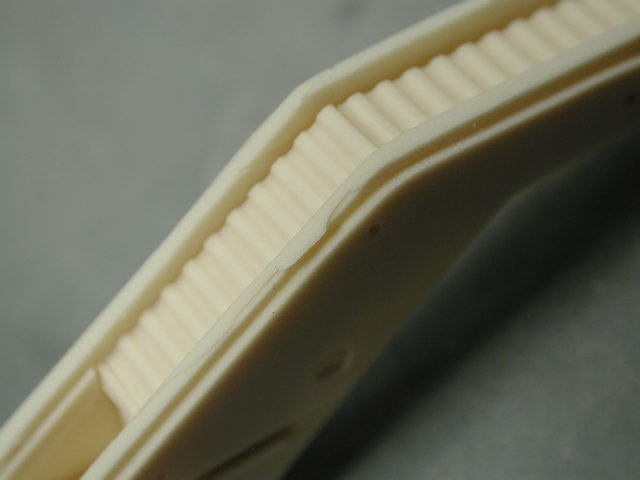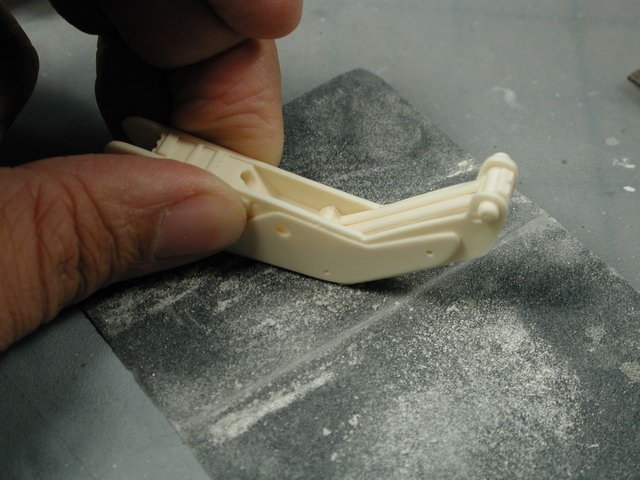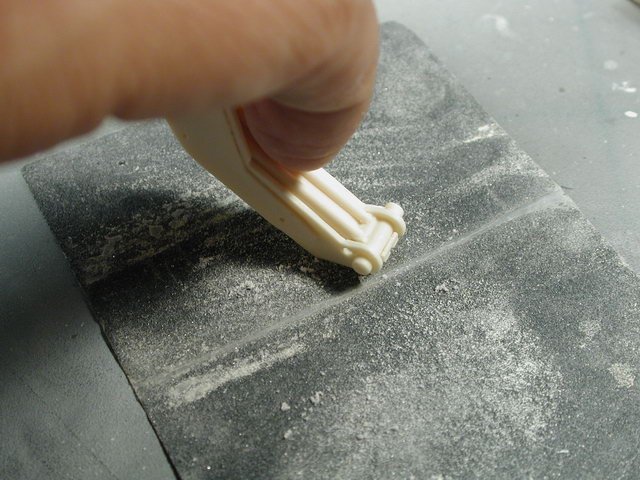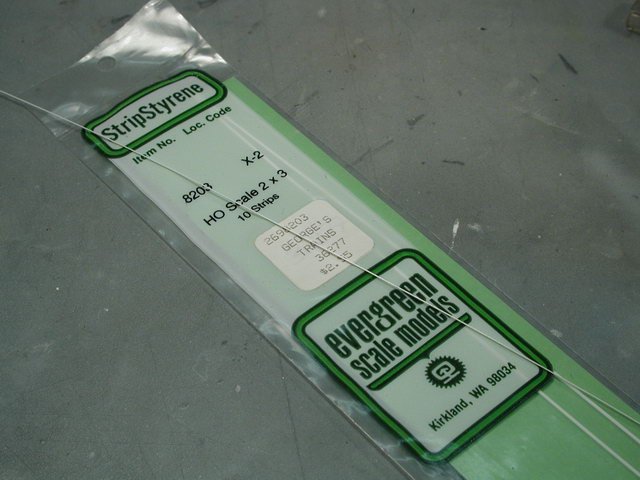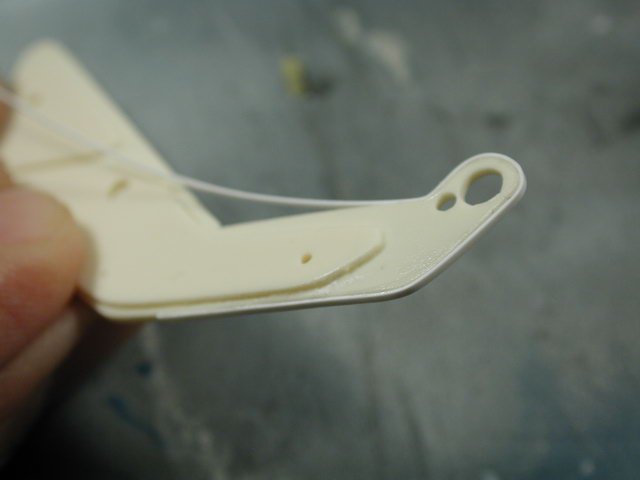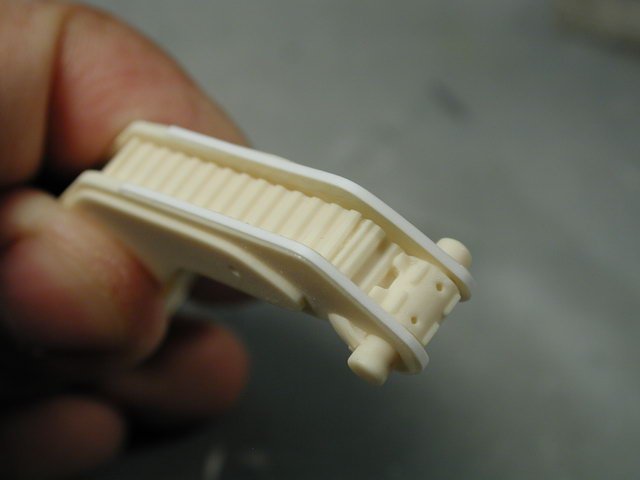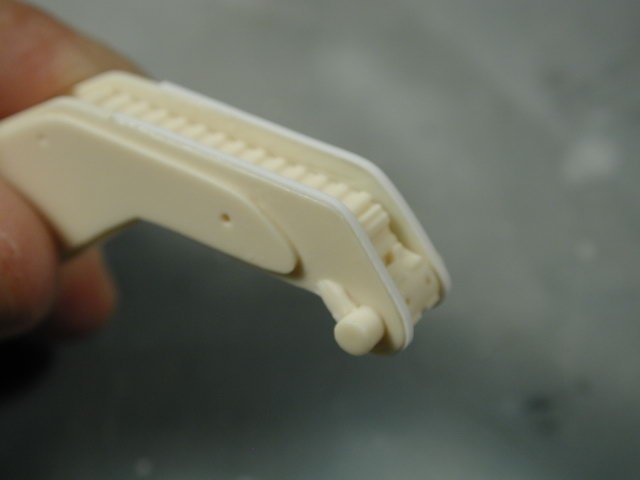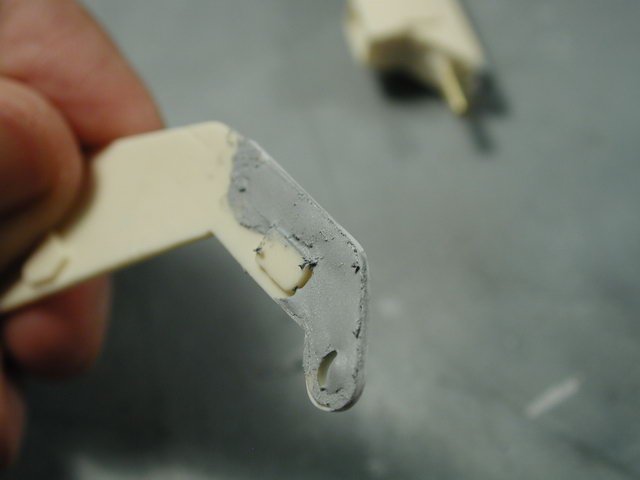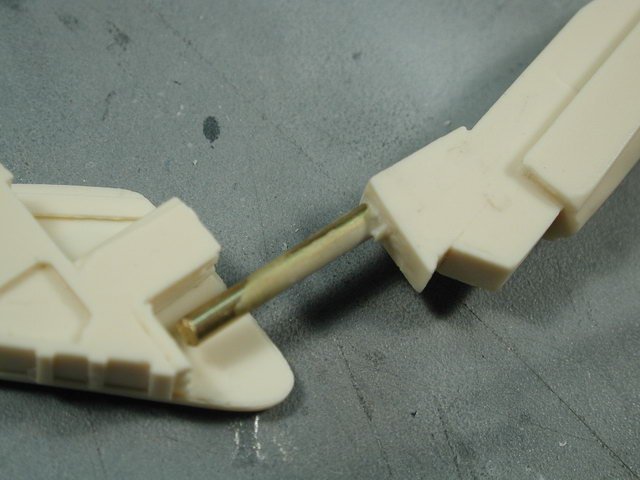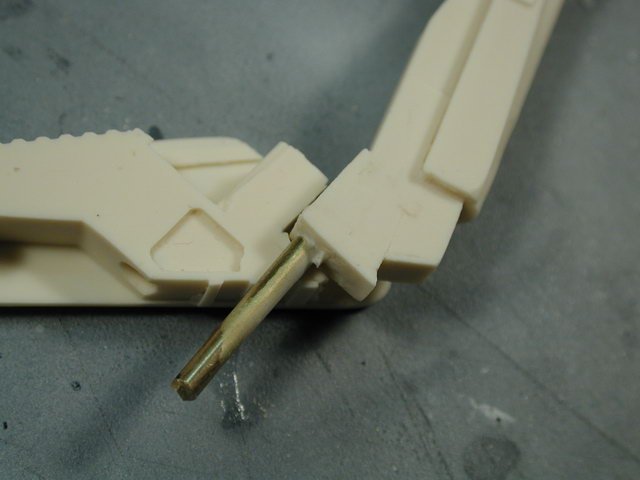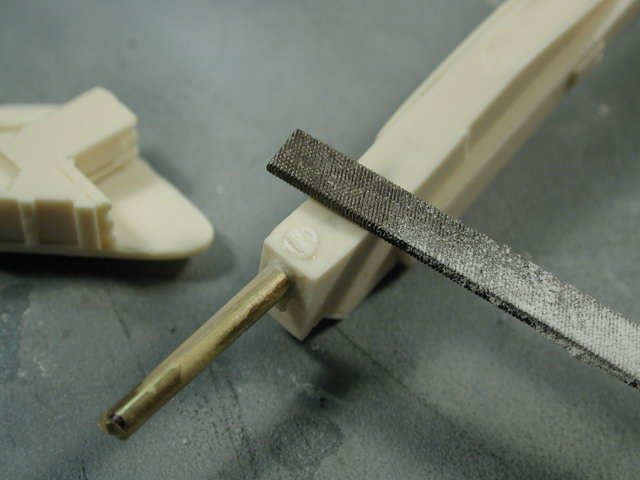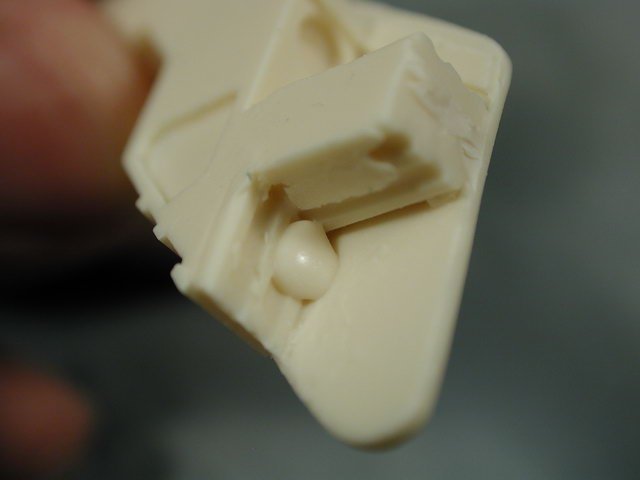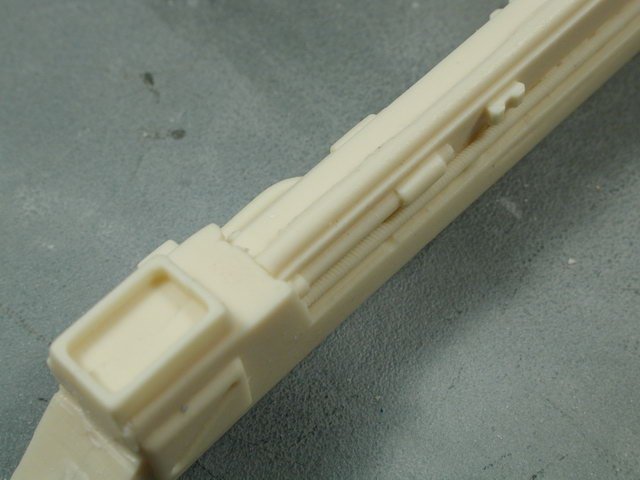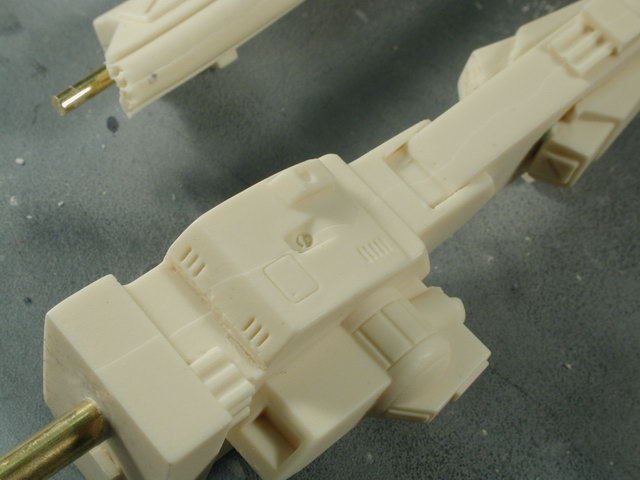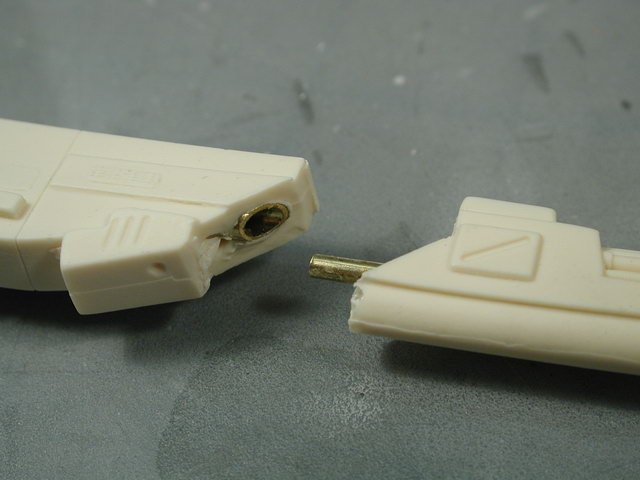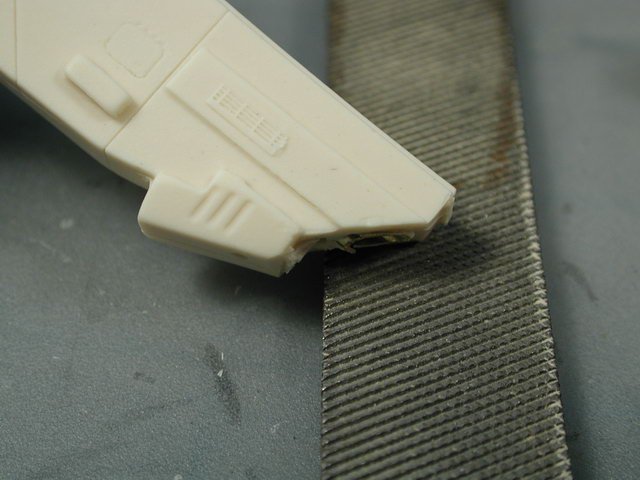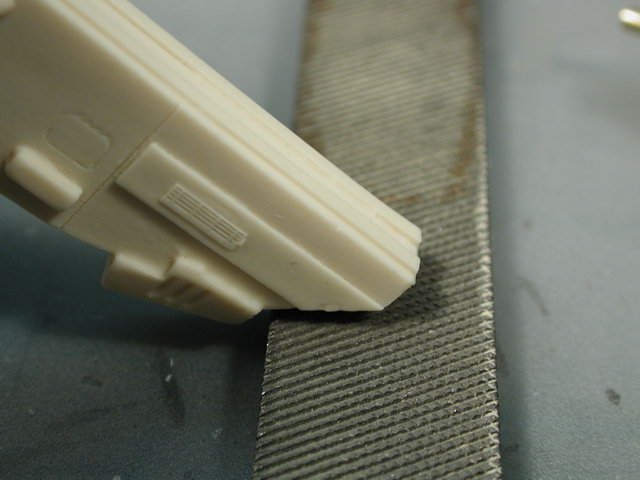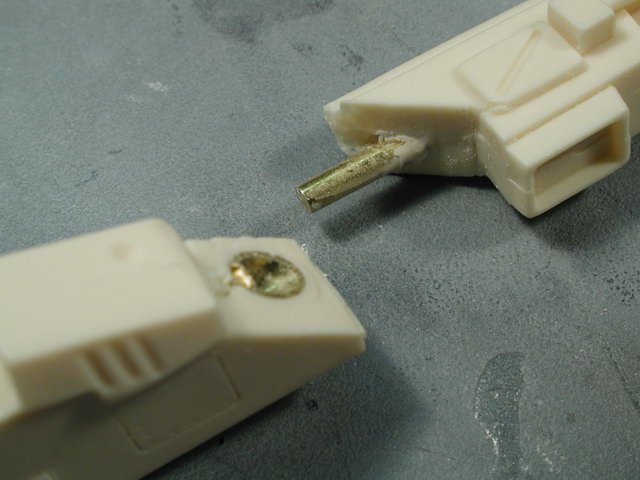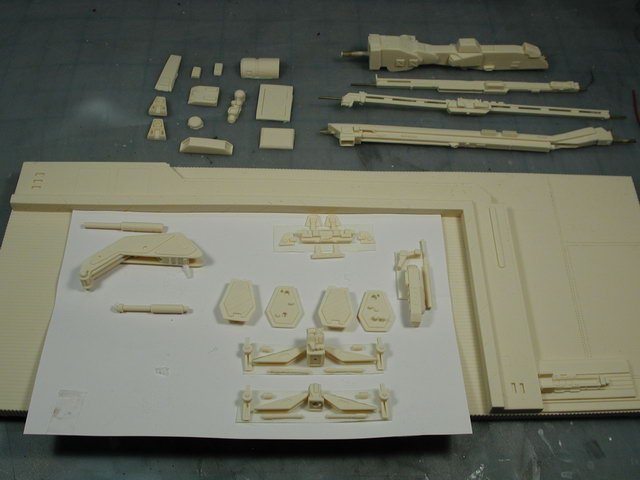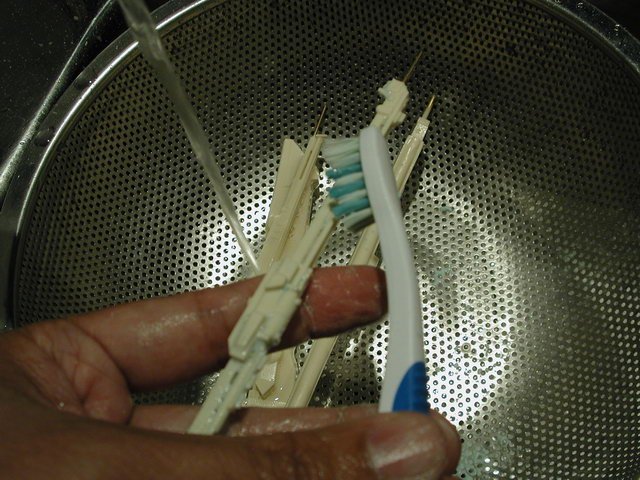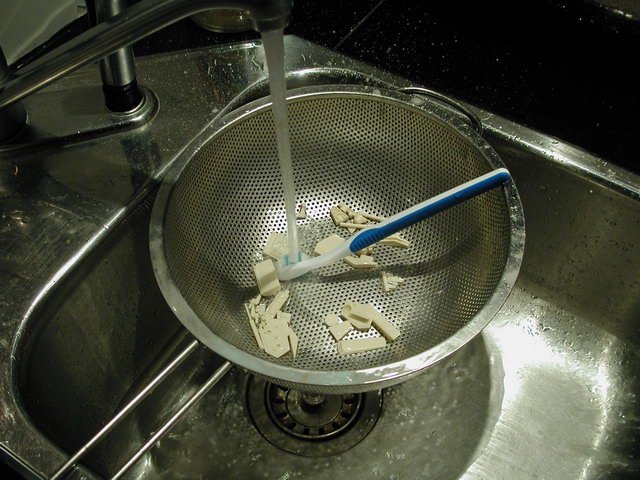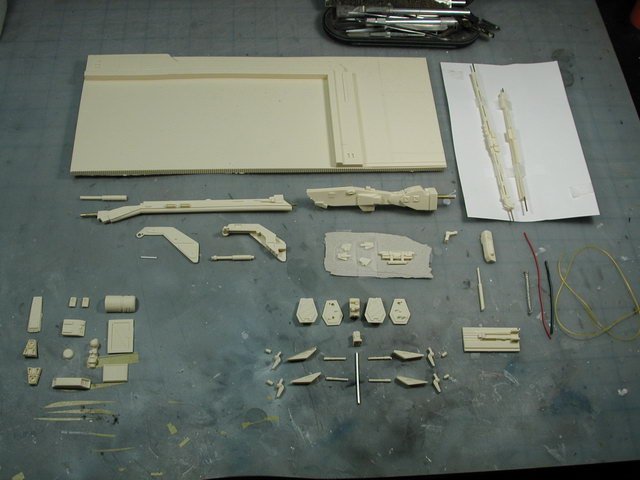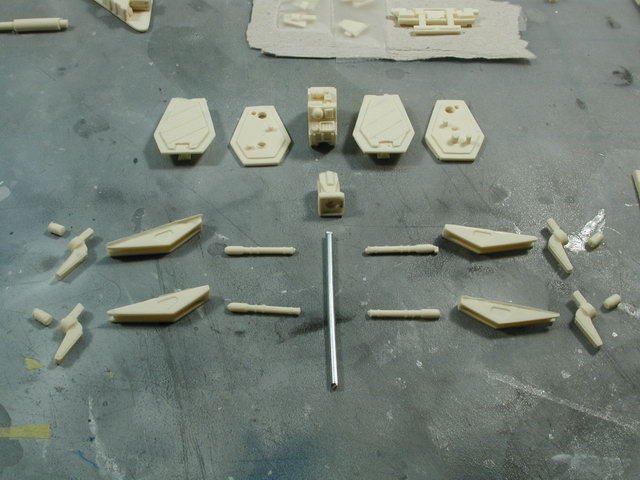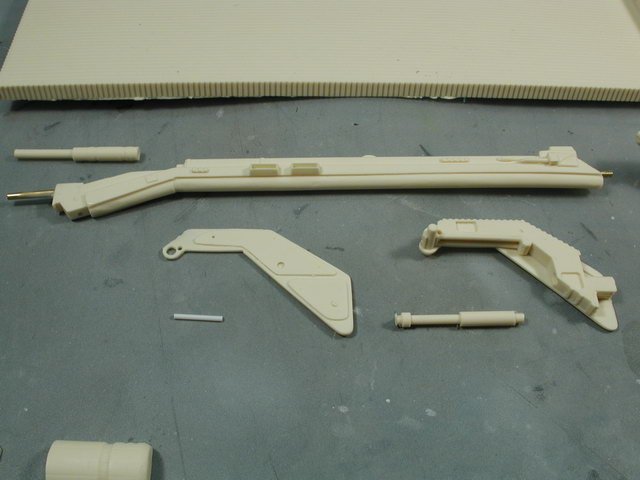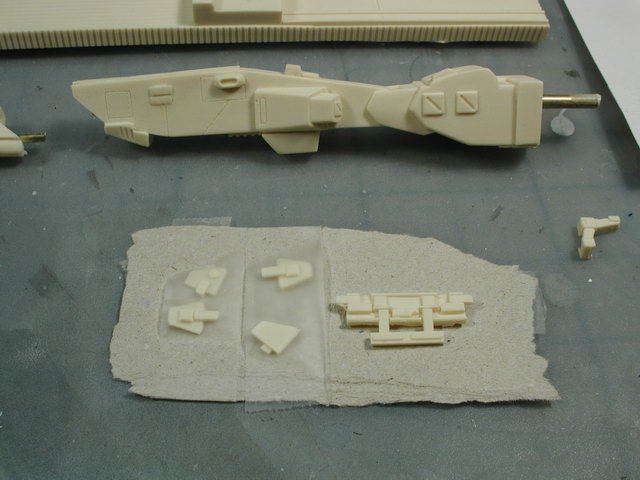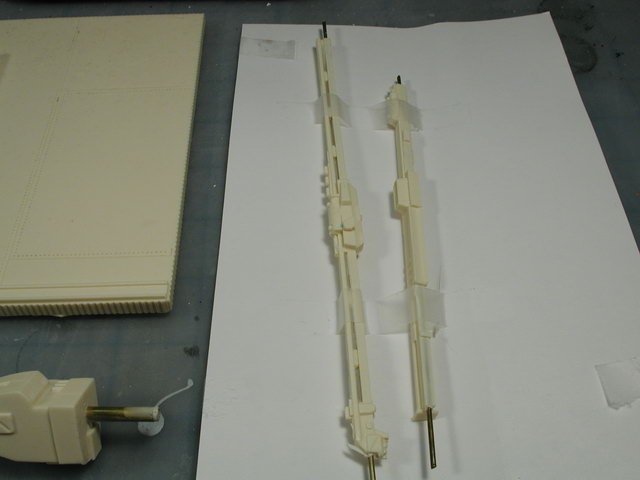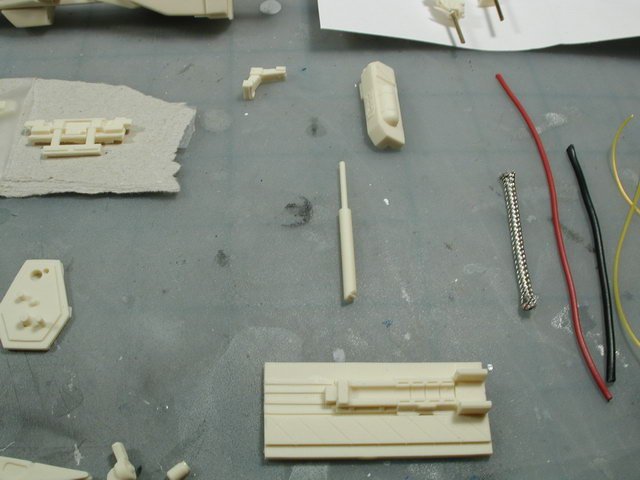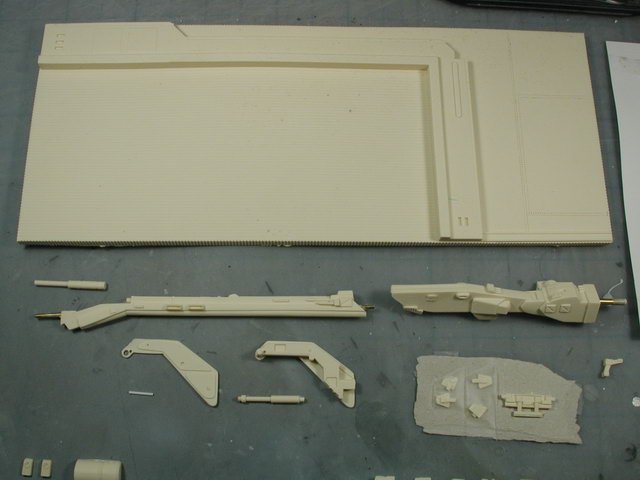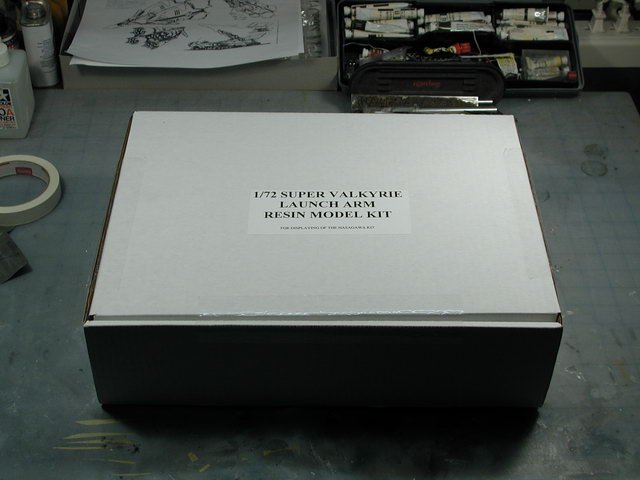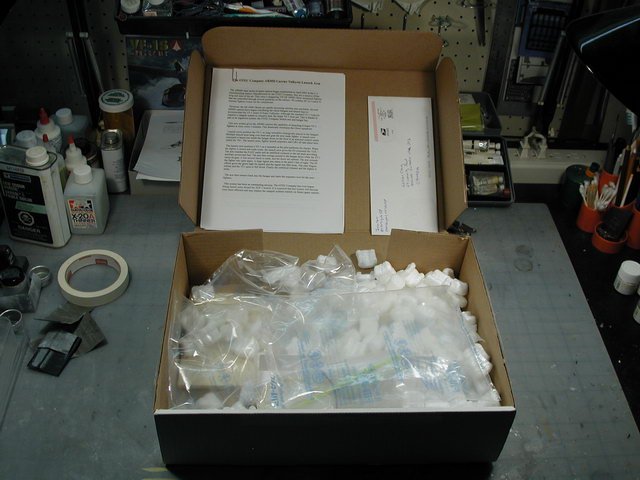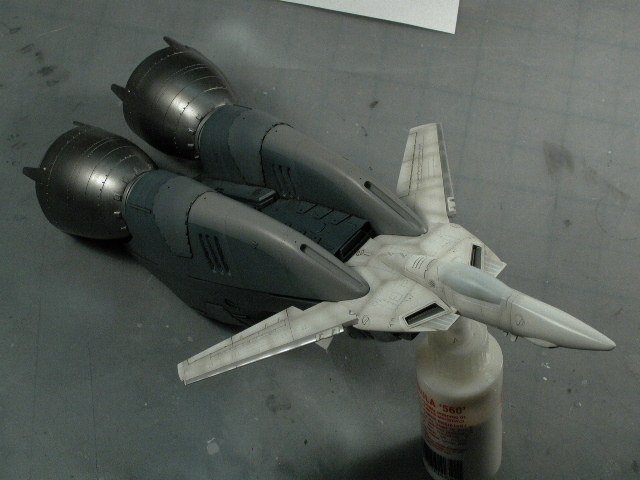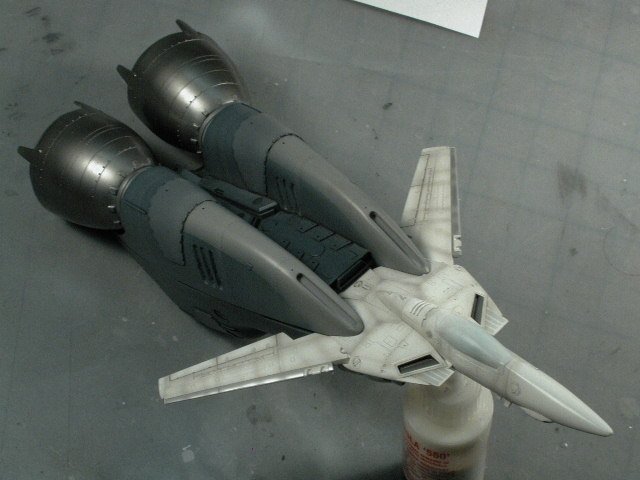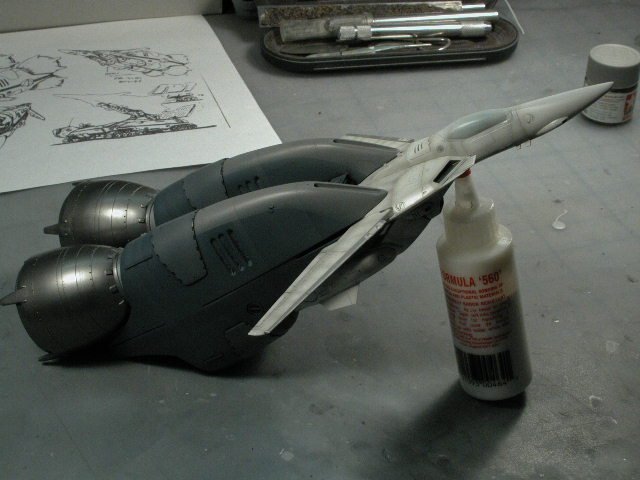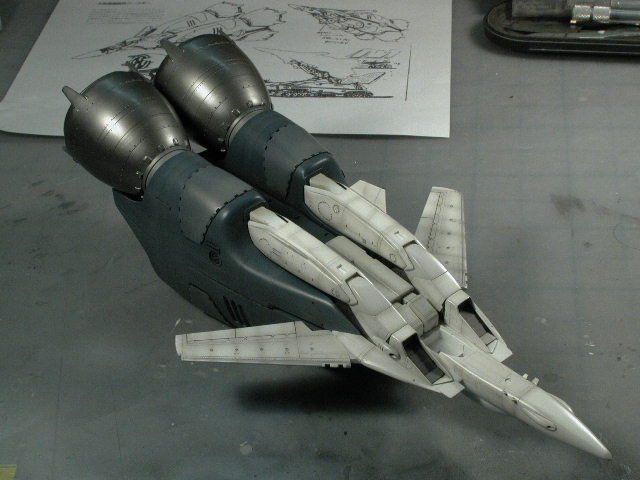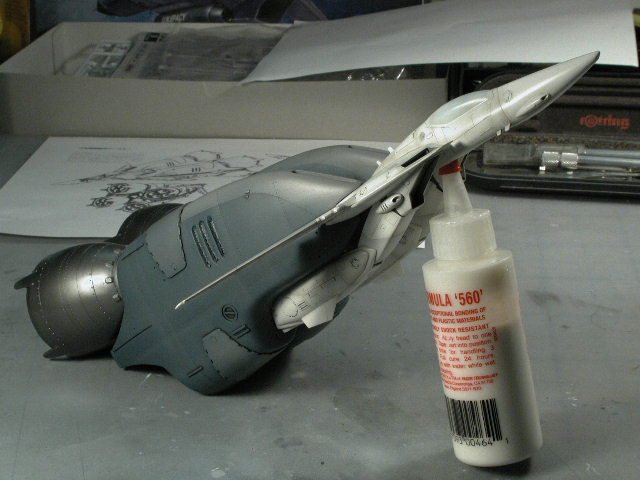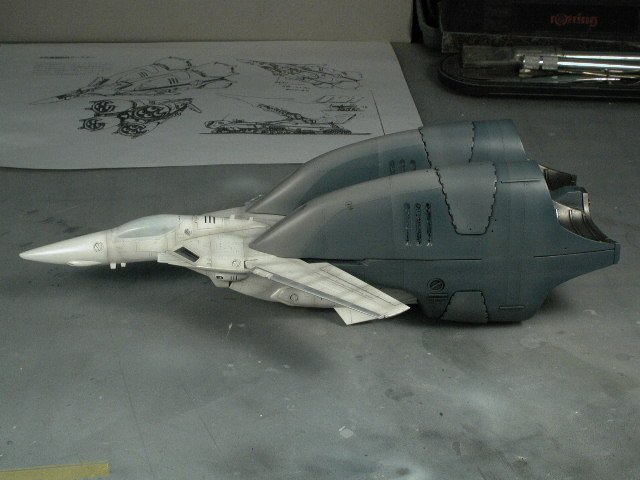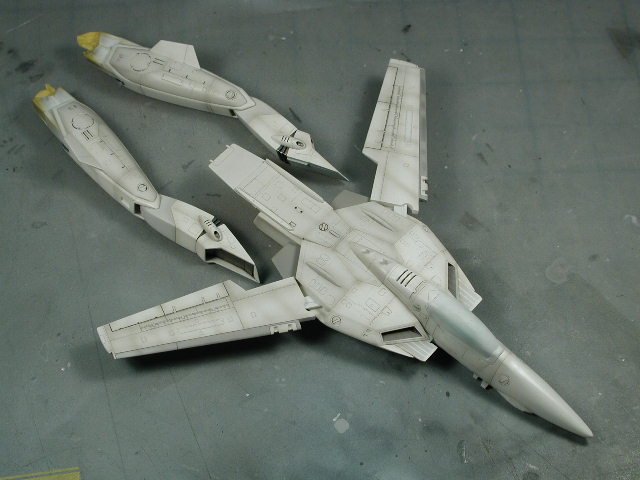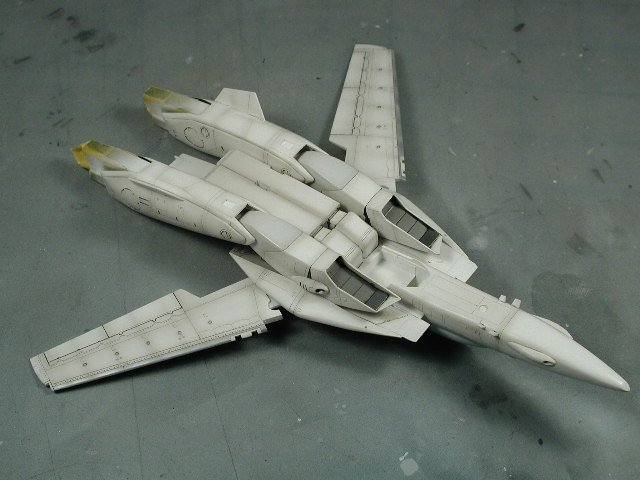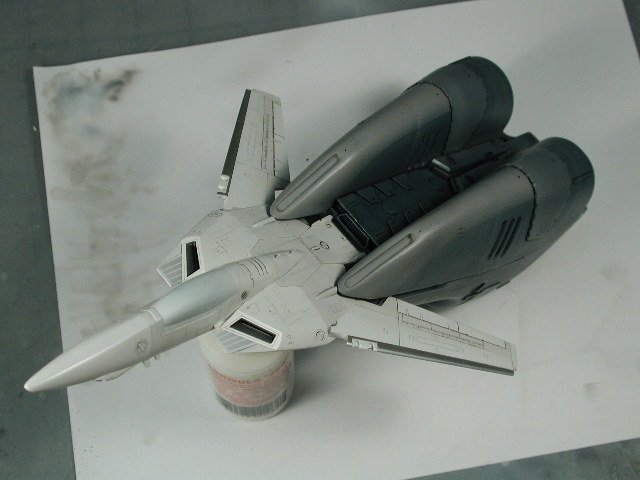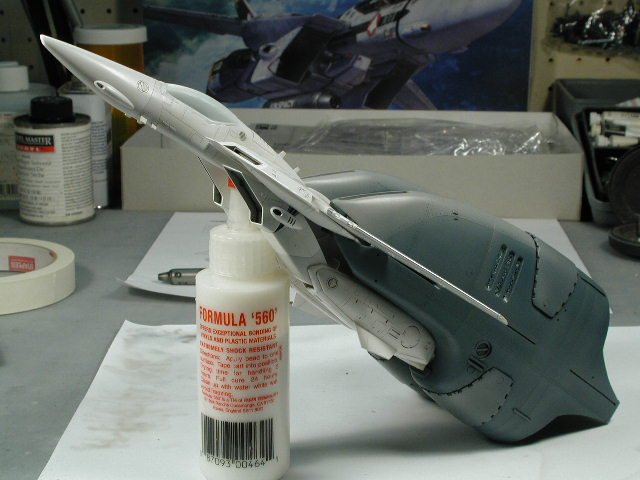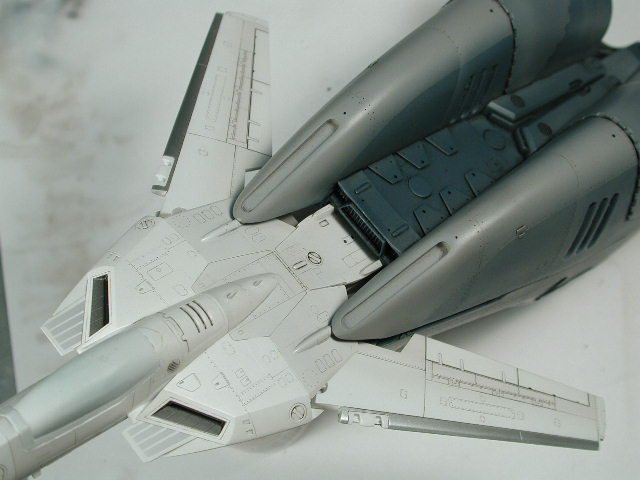-
Posts
4304 -
Joined
-
Last visited
Content Type
Profiles
Forums
Events
Gallery
Everything posted by wm cheng
-
I'll put my references here (anyone with any others especially colour ones please feel free to post them here too - for my benefit! ) (P.S. Anasazi - if you're listening, I'd love it if you came up with some decals like the wierd stylized numbers or "Fire" lettering for the tiny signal arm?! - that will be a bitch to paint)
-
Remember to re-scribe any panel lines that you may of sanded away or made shallow. (I've got to let the putty dry - I just tried to sand the puttied piece only to hit fresh soft putty below the dried skin argh, I hate being impatient - now I have to re-putty and let dry properly) In the meantime, I'd welcome anyone else building theirs at the same time to post here too - I'd like to see where you're at and what you're solutions are too. Additionally if Gundamhead or Jesse has any comments or suggestions to how I'm "bastardizing" their kit I'd love to hear them here too.
-
This is another problematic area - the outside finger plates are molded with an inconsistent thickness again. Its especially worst at the top of the plate. I'm not sure what to do at this point, I may re-build them out like the wrist with the styrene edged strips - but it may interfer with the claw arms later on. I wait till I get more of the arm together first in a dry fit before I determine what is the easiest way to correct this edge.
-
The inside finger plates can also use some sanding to bring their edges down a bit so they are more uniform with each other. On my copy, I have some chipped edges to one of my plates, so I covered them with Tamiya putty to be sanded down and re-shaped to get a sharp edge again.
-
There's a bit of excess to this part on one side, so I flats sand the excessive side. I don't mind that there is more resin - as long as there isn't less! Some bubbles might appear as you sand the side down - but don't worry, since these sides will never be seen - they attach to the inside finger plates.
-
I skip all the sections that tell us to attach any of the hydraulic pistons. Its important to dry fit them to get a sense of orientation and angle, but I usually leave them off till the end because its easier to paint the actuator part in chrome silver without have to mask it. So I skip to the 4th item in the instructions, the claw sensor part. I drill out the holes as instructed to locate the other side. The 3 small ones use a 1/16" bit and the large hole uses a 3/32" bit.
-
I've got to show this amazing cast! Whoever (Gundamhead or Jesse) cast this portion - its amazing!! there is a fine coruggated hose on the surface of the upper arm that is casted so that its actually free of the arm! WOW! way to go! I just had to mention it since I realize how hard this must of been. The rest of these shots just show boring old sanding. Like any other kit, I just started to sand any seams I can see. Plus there was an area with some small divits that will be filled in with some Tamiya putty.
-
-
I thought I'd look at the wrist joint again. I carefully lined up the hole by pressing the end of the brass rod into the resin to make an indentation - then I used a dremel to drill the hole. Of course I drilled too far and it went out the other end - but not to worry, I'll plug it with some piece of gak later. Its wise to not use any power tools on this kit, and just use your hands, but I didn't have a pin-vise that accepted any bits as large as a 3/32" bit.
-
I used a 3/32" drill bit to "ream" out the circular indentations - don't attach it to the drill, just hold it in your hands and use the bit like a pin-vise.
-
I think its pretty essential to get yourself a set of fine files - it is nice to have a variety of profiles such as a flat, square, round - they are pretty inexpensive. I decided to go around and clean up a few areas around the wrists - mostly to sharpen the details and clean up any circular indentations that did not transfer well from the mold.
-
Now I'm looking at the wrist a little more closely - hmm, the first potential problem surfaces. On my copy, the other side of the wrist is molded very thinly towards the pivot end. This will cause a problem since this is a very visible part of the arm (it will be right above the Valkyrie) and there is the other side to compare too. This must be corrected. First, I dry fit the two halves together, and holding the two halves in my hands, I lightly sand the edges by putting a sanding film on the table and running the part over it - this aligns both edges so that they are parallel with each other. Then I have some extra styrene strips (you can get them at any local hobby/train store) and I'd thought I'd use these strips to create an even visible edge on both sides. So I laid down a thin film of crazy glue on the edges and ran the pre-cut thin styrene strips along each edge. (You can also just cut thin strips from a sheet of styrene too - I just happened to have some of the right width laying around). Now on the thin side, I used the styrene edge as a fence to fill some Tamiya putty up to. I will put aside and work on something else as the putty dries.
-
Just following the instructions given - I'm essentially going to do it in the order that Gundamhead and Jesse laid out in the typed instructions. I was never strong in word problems when I was a kid - I'm a visual learner, so I tend to do a lot of test fit (trail and error) to get the gist of the instructions before I commit too far. The next step is to look at joining the wrist to the upper arm. I've left the upper arm and lower arm still apart for now, since I'm thinking I'd kill two birds with one stone - when I mix up the 5min epoxy, I have 5 minutes to glue both the upper and lower arms as well as the wrist in place with the same batch of glue. Once it got the orientation of the wrist to the arm, and where the rod goes through. I look at the mating surfaces, and noticed that there are a few little bumps and extra bits of resin here and there to file down to get a nice tight fit.
-
I don't think I got a particularly flaw-free cast kit - I believe it to be typical. So of course there are going to be a few seams here and there (its not a toy after all! ) That's what separates us masochistic modellers from toy owners! Always expect seams that separate halves. Most just take some sanding, however when they run into a depression or recess - it becomes a little harder. In my case, I'll sand off all the raised bits, but when it come into the recess, I'll fill it with some scrap of plastic as detail.
-
Neat tricky joint (glad that the joint isn't just a straight line, but the angle and the fact that a smaller solid brass rod goes into a hollow brass rod helps so much!) However there is a bit of clean up work here. I'd take a rough file to do this work first, since you don't care so much about the inside finished surface (in fact you'd want to rough it up a bit for the epoxy to bite) additionally, the rough file is to file down the hollow brass rod (I don't want to wreck a nice fine file on the brass). I'd just carefully draw it in one direction (towards you) on the file to work down the hollow tube. Keep test fitting the pieces all the time.
-
OK, I laid everything back out according to assembly and the photo of the list of parts again. This time I took some masking tape and double side taped the parts to the card that came in the box which protected the longer pieces - this way, if I sneezed or something, the little pieces are still arranged roughly according to instructions. I also put away those extra/optional pieces that Gundamhead provided (I recognize some of these Gundam parts ) this can be used to spruce up the large base in the end - but I just didn't want to confuse them with any of the essential parts of the arm itself for now.
-
WHOA! Isn't that a bit overkill - its like killing a flea with a hammer! Firstly, lets look at where the brass rod is exposed. Its fairly linear and parallel with the lenghways of the signal stand. Additionally, if you look at the signal stand or any of the arm pieces, there are plenty of "tube-like" umblical details that also run lengthwise. Lastly, there are no "canon" line art that truely discribes each and every pipe and umblical that run along the arms - so we are allowed to interpret (as long as its within reason). I would suggest cleaning any remaining resin attached hap-hazardly onto the exposed brass rod - making it exposed properly. Use the brass rod as part of the details running up and down the signal stand. Additionally add a few pipe or wires along side of it - especially where it will connect to the next piece. I guarantee you that by the time its painted - you can't tell which one was the brass rod and which ones are the surface detail umblicals that run up and down the arm. Remember there are always alternatives to making any mistakes better it just depends on the time you have and whether its worth it to you or not.
-
Hey Mano, sorry to see the casting flaws on your kit - with such a limited small run kit, its pretty hard to get a flawless cast (I'm always prepared to fix casting flaws - its just an unfortunate reality with resin kits ) I haven't quite inspected the quality of each components yet. However I do have a bit of pitting on the large base as well, but I don't think its a huge deal, and actually, I don't think I intend to correct them with sanding, its okay to have pitting on the large ship exterior, it could be battle damage . It's great that the resin arm pieces have brass rods embedded into it for strength, but it must of been a bitch to align in the mold as they poured the resin! The good of it, is that it probably easy to hide by adding some extra pipes or wires on either side of the exposed brass rod to hide where the resin ends and the brass rod becomes exposed - just more pipe gak! Yes, I have some seams that run through some nice detail too, I'll just have to sand them and rebuild the detail - there's nothing you can do about resin kits in this regard - its not a styrene injection kit where each mold is almost perfect. Well the next step after opening and sorting your pieces is to wash them thoroughly with comet. I scrub them with a toothbrush and comet bleach powder to get rid of the release agents used in the molding process. There were so many tiny detail pieces in the kit that I decided to wash them over a strainer just in case I drop a piece, I don't want it to go down the drain! I spent a few hours scrubbing! I'm a bit paranoid, since I had a few incidents where I was too lazy to do a thorough job and went on to building, then when the time came for painting, I'd get a patch where the paint bubbled up like water on wax paper! Its much harder to wash at that stage. I've tried a few other solutions such as dish detergent, which is good too, but you have to becareful that it doesn't contain any moisturisers for your hands (that leaves a greasy film behind). I've also tried this Polly-S mold release detergent that you're supposed to let the parts sit in overnight and it dessolves the mold release. Well, it doesn't work at all - in the end only elbow grease and scrubbing works. This step applies to all resin models.
-
Wow! fantastic photos!! - very clean...
-
Upon ripping open the box - the first thing I did was lay out all the pieces. I used the colour copy of the parts list as a guide. This was a good way to double check you had all the pieces (and get familiar with what they look like - remember unlike a styrene kit with sprues and identification on the sprue of the kit part - you need to recognize its shape). Plus there's lots of great little detail bits to add (and possibly loose ) The following are other close ups of the many pieces that go into this kit - I tried to keep their layout and orientation similar to the instructions in the beginning, this helps me become more familiar with them. (gotta help the wife prep for the kiddies - more to follow after the young gouls go to sleep...)
-
Woohoo!! Just got my Launch Arm! I am starting a thread over at the How to Build section as I start this puppy! Come join me (and build yours too at the same time!) over at; http://www.macrossworld.com/mwf/index.php?...t=0#entry341193 (more to come tonight after the kiddies have had their fun...)
-
I'm so pyched! I just recieved a huge box at my doorstep this morning!! I got Jesse's signal arm bits and pieces last week (all non-first run kits will have all the pieces in one box) but the sheer size of the parcel took me by surprise. I would like to thank them for all their efforts on producing this amazing kit - for those of you who haven't ordered one - GO AND PAYPAL THEM NOW! I've wanted a launch arm for my Hasegawa Super Valkyrie ever since Hasegawa put out the kit - and then I saw this crappy photo on these boards at some Wonderfest a few years back showing a launch arm - boy was I dissapointed. Then I found out it was limited run and really expensive - so it was salt on the wound. Anyways needless to say, its one of my most sought after mechs to be produced. And what a job they did! from that very simplistic arm Gundamhead has added so much more details (all of which was really appropriate - and I'm pretty picky when it comes to non-canon improvisation) and they really produced a kit in itself. http://www.macrossworld.com/mwf/index.php?showtopic=14475 http://www.macrossworld.com/mwf/index.php?showtopic=16293 I promised them I'd drop whatever I was doing, and start on this immediately. Well, I was thinking, how hard or complicated could a launch arm be? its essentially a stick with a base at one end and a claw at the other. Well, now after studying the kit for a bit, its quite a deal. With all the extra bits and pieces that GH&Jesse put into it - it really becomes its own entity, and not a mere Hasegawa kit add-on! So it may take me more than a few days to power through this - I need to give it the time their efforts deserve. The first thing you'll notice is the size of the box (did I say it was large?! ). Its basically big to fit the base (presumeably a section of the surface of the ARMD-1 or maybe a section of the SDF-1 itself) - and its a fair hunk of resin. Also included is a few pages of written instructions (with a cool history pre-amble on the Launch Arm mech) and a colour copy of some photographs of the basic parts lists and a few select assemblies.
-
OK, everybody - I'm so excited, I just got the resin launch arm kit that Gundamhead and Jesse produced! and promised them that I'd drop this to start on their wonderful kit. It shouldn't take too long - and I will resume the Booster when I finsh their kit (I already have a Max VF-1A Super ready for it). So here are a few parting shots of the stage at where I am for now. The Valk is ready for decals and the Boosters are ready for the black stripe to be painted on and decals as well. I plan on doing the engine bell metallic shading with all those shades of burnt metal at the end - that will take the longest. Join me over at the Launch Arm thread!!
-
Spatula - I don't have any scans of the book, but if you can get it for $40cdn - then you definitely should! Its a steal at that price - I paid more than that, it was going for something like $70-80cdn at a bookstore here in Toronto. I highly recommend it - its an excellent book - all the pages are gorgeous colour! (Of course I'm a huge book collector - I think I have every thing in print from Macross - at least one copy if not more!!) Also, $40 for the Models are a really good price up here in Canada - the Supers or Elintseekers were more like $60 up here - and if you order them from HLJ, after shipping customs, duty and brokerage, you might save $5-10 a kit! So I managed to do the post shading yesterday... Man I need a new airbrush, I think my 20 year old airbrush should be retired soon. It has no problems do the large flat areas, but the really tight fine control stuff seems to splatter ever so slightly now (although I checked the needle doesn't seem bent and the nozzle seems ok, it might be the mixture - but I'll chalk it up to age). Plus I've been dying to try a double action airbrush - I think I've finally outgrown my single action Badger 200! Basically I traced over most of the panel lines in a very thinned down sky grey on the finest setting - I usually spray like 1/2" to 1" from the model trying to make a pencil line with the airbrush. Its a little heavier than I usually would weather the Valkyrie, but I wanted it a little darker than normal to fit in with the Boosters and from experience, once the high-viz black stripes of the decals go on, you need a lot more than subtlety to fight with the graphics of the heavy black lines! Of course when I made a mistake (which happens occassionally) I wipe if off with a paper towel with a little windex on it - and since the layer below it is protected by the last clear-coat, I only "undo" this post shading layer. Then when I'm satisfied with the look - I seal this in with another layer of ModelMaster Acryl semi-gloss clear coat.
-
Time to go to sleep... Some parting shots as I leave it to dry without my impatient hands putting fingerprints all over it! The next step would be to do a light post shading over the panel lines and seal it in with a semi-gloss clear-coat. Ready for the weathering and decals!

